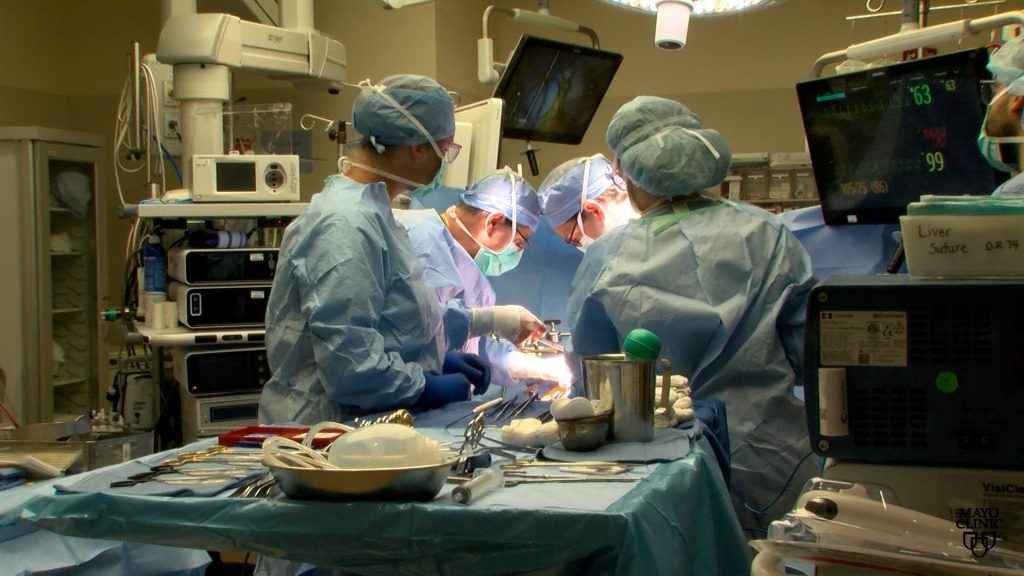-
Transplant
(VIDEO) Liver’s regenerative ability allows for living donors

April is National Donate Life Month. You may have seen or heard stories about transplant chains, also known as paired donations. This is when a living donor is not a match for a specific recipient but still agrees to donate, setting off a chain reaction of transplants. Most of these paired donations involve the kidney. Because most people have two kidneys and usually can get by with one just fine, donating the other is an option. Far less common is a paired liver transplant.
But you might be asking yourself, if a person only has one liver, how can you be a living donor to start this chain?
The liver is the largest internal organ in the body. Among its jobs is helping to digest food and getting rid of waste. Unfortunately, disease and other factors can lead to liver failure.
Watch: Liver’s regenerative ability allows for living donors
Journalists: Broadcast-quality video (2:11) is in the downloads at the end of this post. Please courtesy: "Mayo Clinic News Network." Read the script.
"At any given time, there's about 10,000 people waiting for a liver transplant in this country, and every year, we add another 10,000 to the waiting list," says Dr. Timucin Taner, a Mayo Clinic transplant surgeon. He adds that it can be a frustrating situation.
"The waiting list is not changing, because we're able to transplant only about 10,000 of them with deceased donor livers," he says.
What can make a difference is living donors. Even though you only have one liver, Dr. Taner says you can still be a living donor. "And this is all based on the liver's amazing ability to regenerate. Once you do this operation, you remove part of the liver. The remaining liver, as well as the part that goes to the recipient, starts growing right away, and it becomes a full-size liver within about three to four weeks. So it's an amazing capacity of the liver," he says.
Not every donor is going to be a compatible match for an intended recipient. That's where paired donation comes in, explains Dr. Taner. "So there are several situations where the donor may not be suitable or compatible with the intended recipient. In that situation, if they're clear to donate, then they can donate to somebody else who is compatible to them, and that recipient's donor can donate to the initial recipient. So we're just allowing these donors to give the gift that they're intended to give," he says.
Dr. Taner led the team that completed Mayo's first paired liver transplant in August. It was initiated by an altruistic donor. Dr. Taner says paired liver transplants are not as common as paired kidney transplants, in part because of the logistics involved. "You have to have a big team, and this big team includes nurse coordinators who work day in and day out with donors and recipients, the social work and independent liver donor advocate team, as well as the physicians, the surgeons," he says.
While the hope is to be able to do more of these procedures, Dr. Taner says the biggest hurdle is the number of donors. "So I would encourage people to look into the transplant programs to see if they can donate, and make a decision based on that information," he says.
Related Content:







